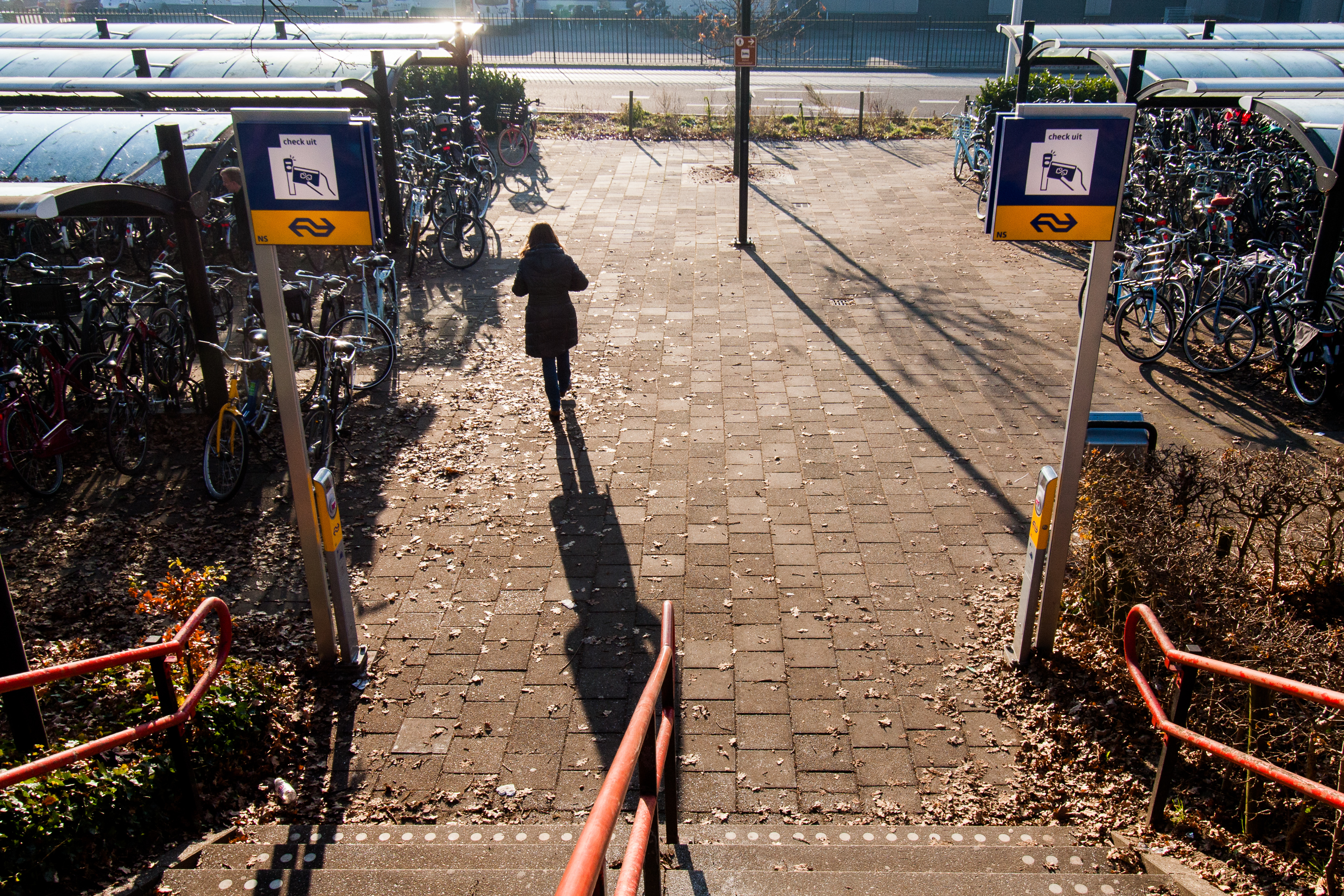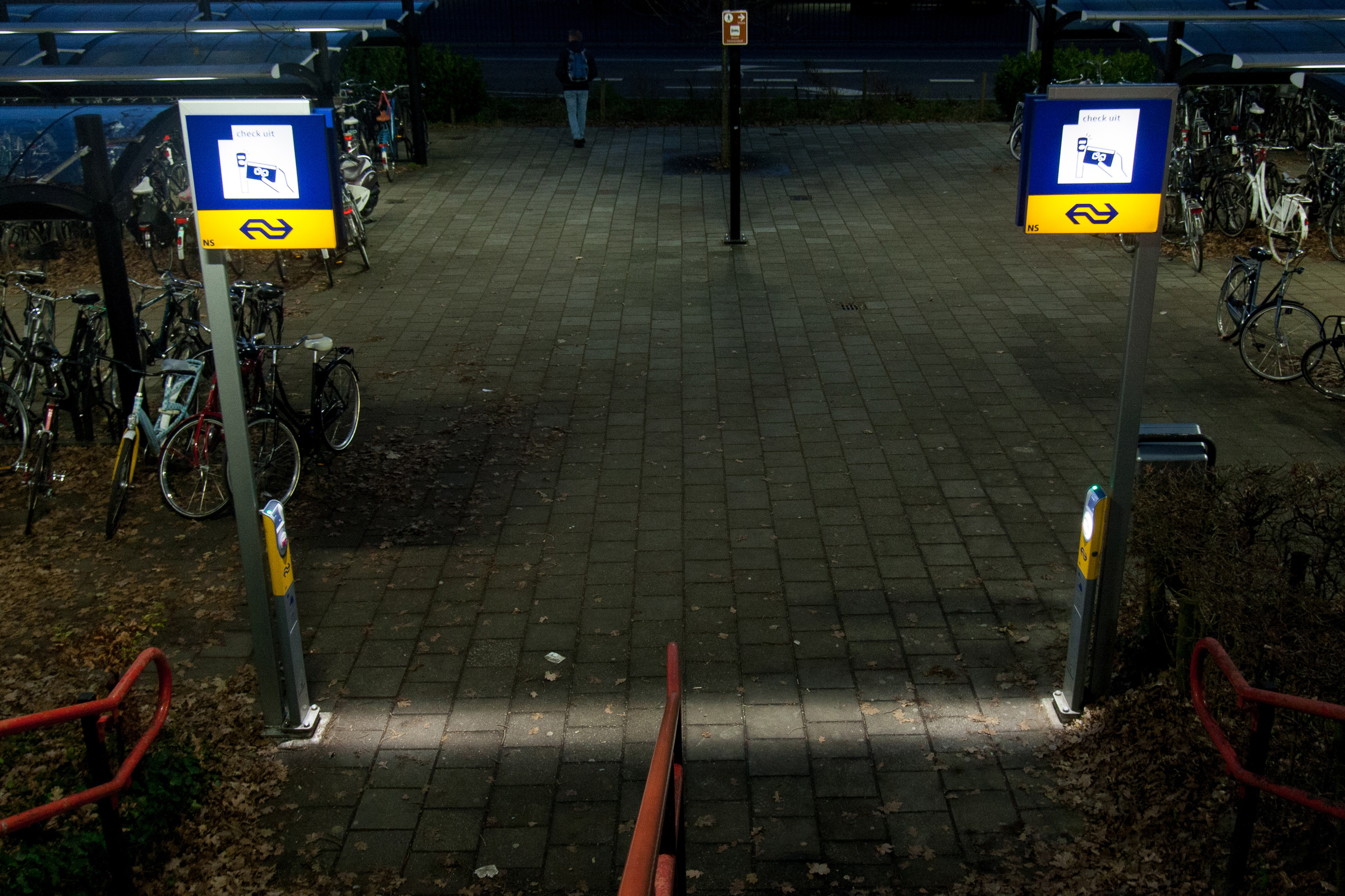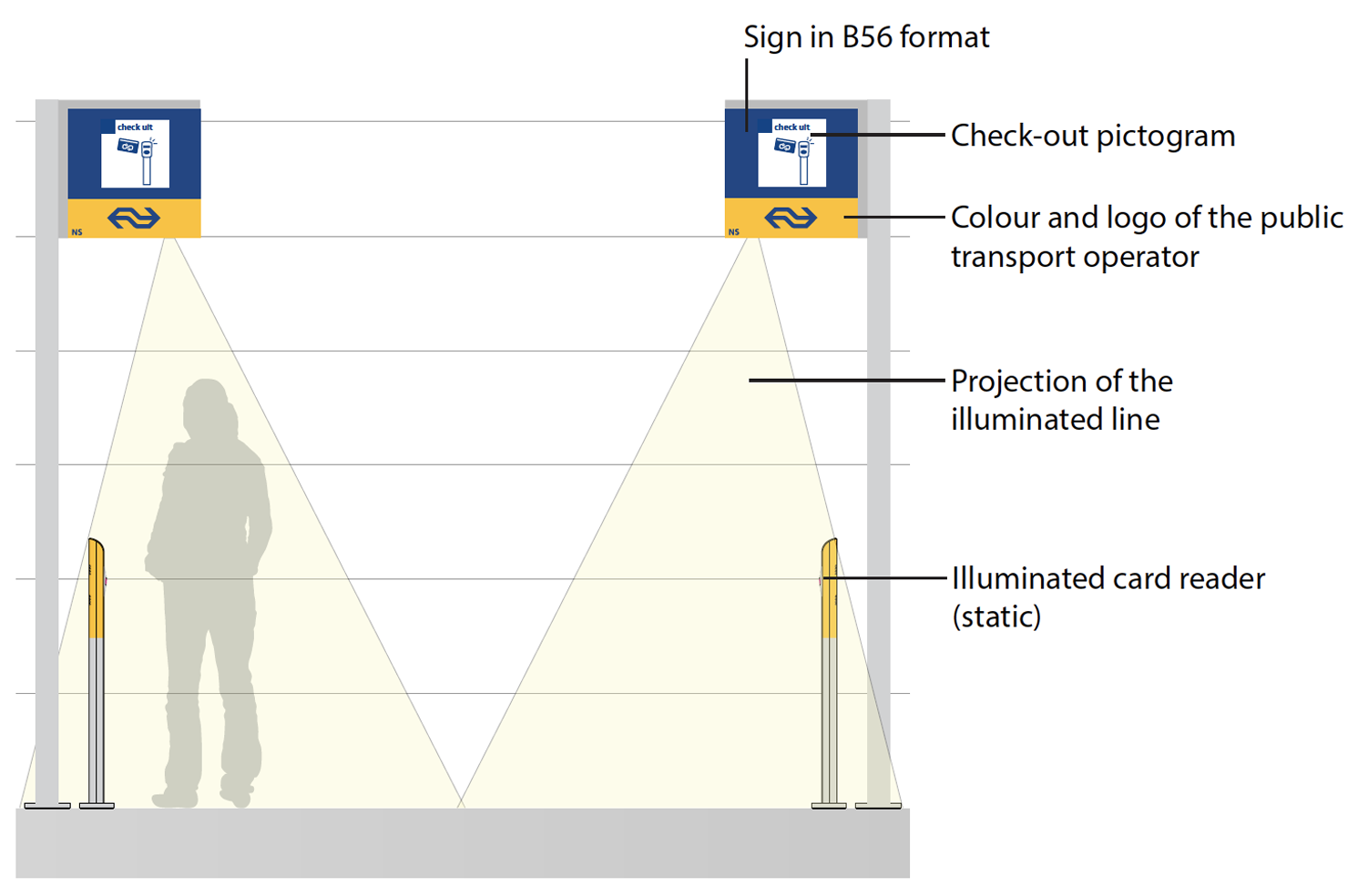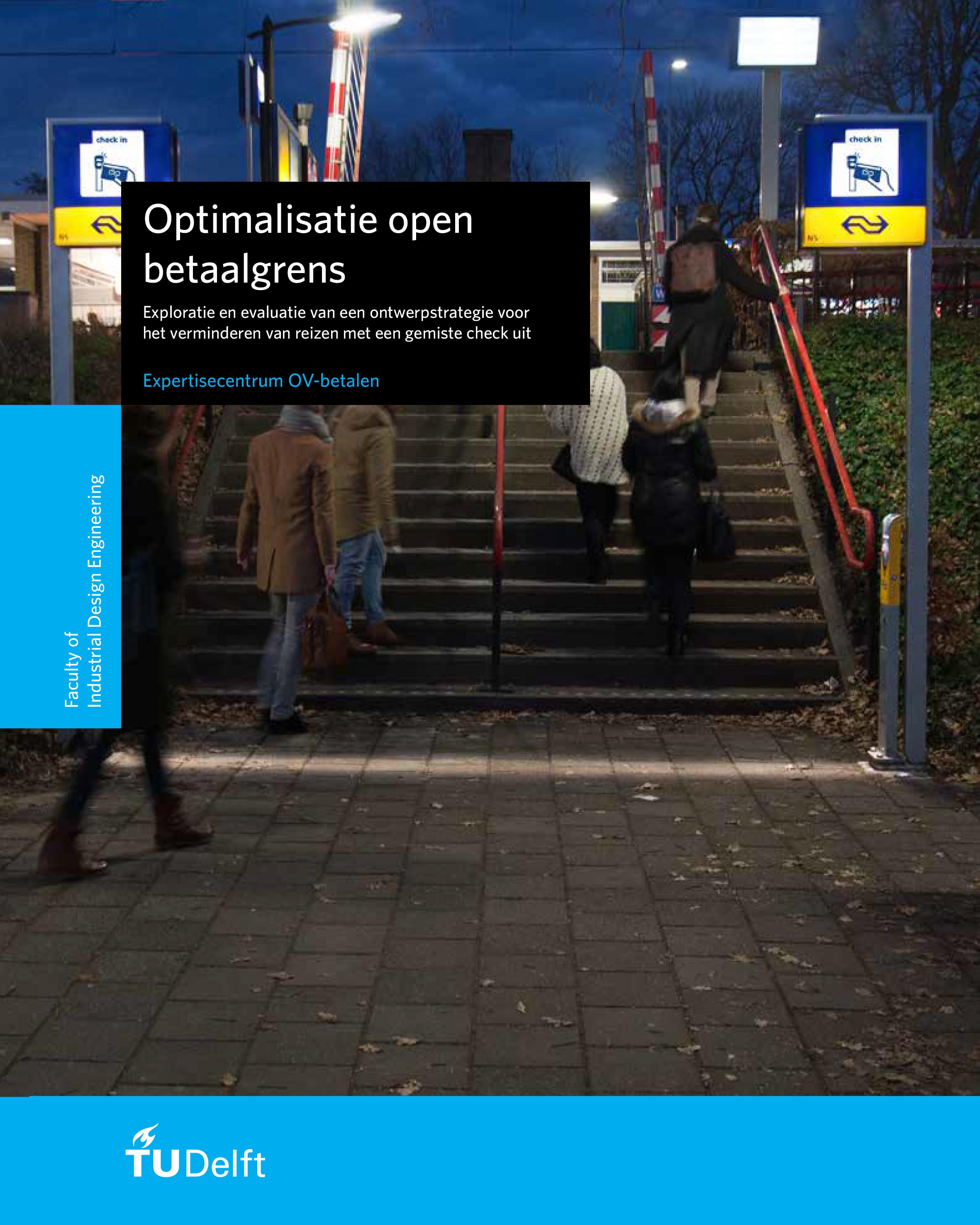Optimising open payment boundaries
Optimising open payment boundaries
Problem statement
Public transport travellers in the Netherlands use the OV-chipkaart, which requires checking in and checking out. One important and frequently occurring incident these travellers experience is the ‘missed check-out’, which occurs when a traveller fails to check out upon arriving at a station. This phenomenon occurs primarily at stations with ‘open payment boundaries’ (with poles instead of gates) and creates a greater cognitive burden for travellers and makes the travel experience less pleasant.
Goal
To reduce the incidence of missed check-outs to thus offer travellers a better travel experience.
Approach
The project started by mapping the process of checking in and out at stations with open payment boundaries, in addition to exploring ways of guiding people in performing particular tasks. This information, in combination with an earlier concept design for the open payment border, was used to design a test installation for a field test. The effects of this trial were examined according to a variety of data (check-out volume, claims for reimbursements of missed checkouts and traveller perception) at two stations over a three-month period. The effect of the relocation of OV-chipkaart posts that NS carried out at ten stations was also investigated.
Design
For the field test at the Den Bosch and Veenendaal-De Klomp stations, an open payment boundary was developed with - in comparison to the equipment that is currently in the field - supplementary routing, signing and branding elements, light-emitting validator sensors in the poles and a light line that was projected on the ground. The goal was to increase the visual contrast with the environment. The initial design, which was not implemented completely, also included a portal above the OV-chipkaart posts and a line of coloured LEDs in the floor. These elements connect the posts in manner that creates a visual boundary.
Result
In the evaluation on railway station Veenendaal-De Klomp a reduction of 30% of the number of claims was measured. On the visually busier railway station Den Bosch no reduction was observed. The moving of the poles to the 'front door' of the station, as NS had executed at a number of stations, did not result in a measurable effect on the number of check ins/outs or on claims.
Recommendations for future open payment boundaries
- Place OV-chipkaart posts directly on the walking route at the boundary of reception and travel domain;
- Clear the surroundings of the payment boundary as much as possible of other station facilities and objects;
- Provide a visual connection between OV-chipkaart posts on the ground and at eye level, which will be visible in both daylight and in the dark;
- Make the payment boundary more noticeable.

